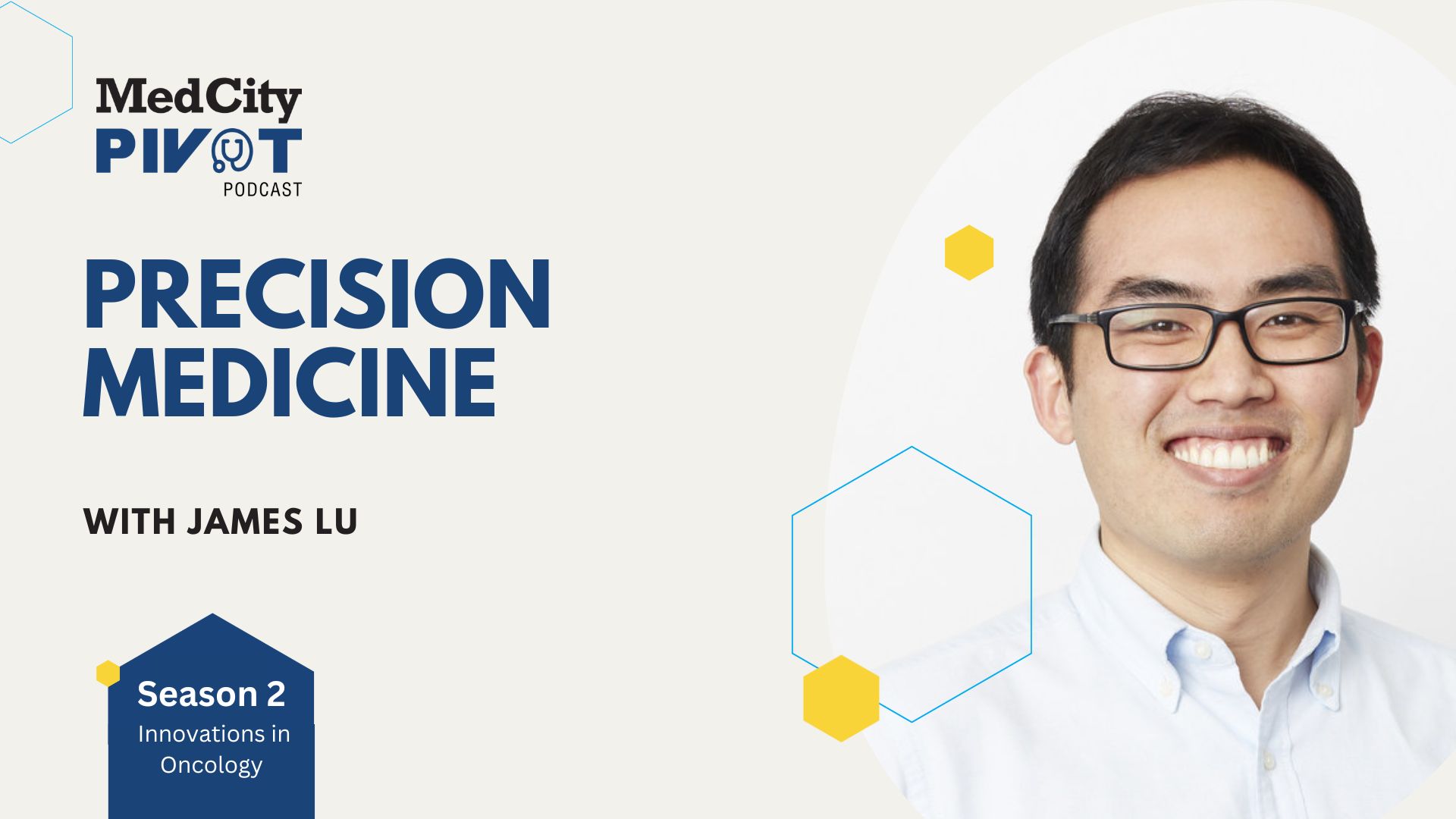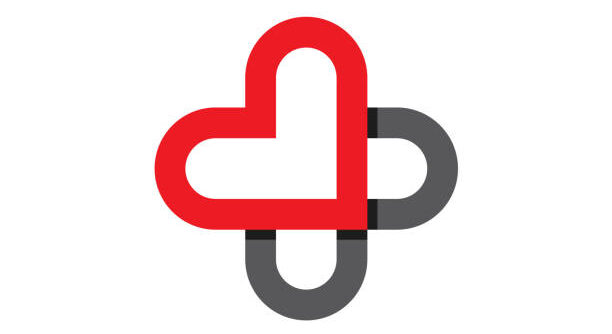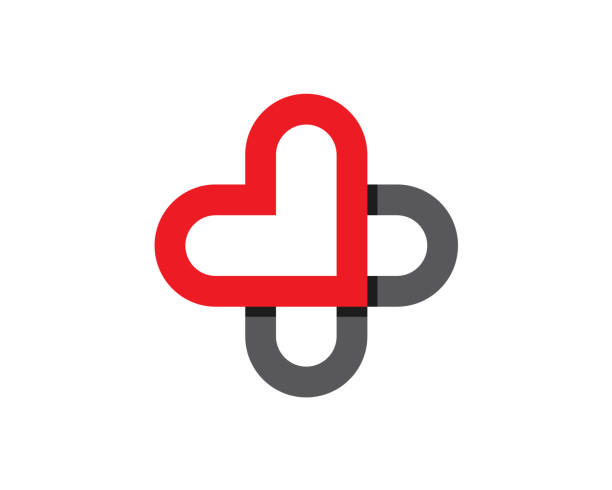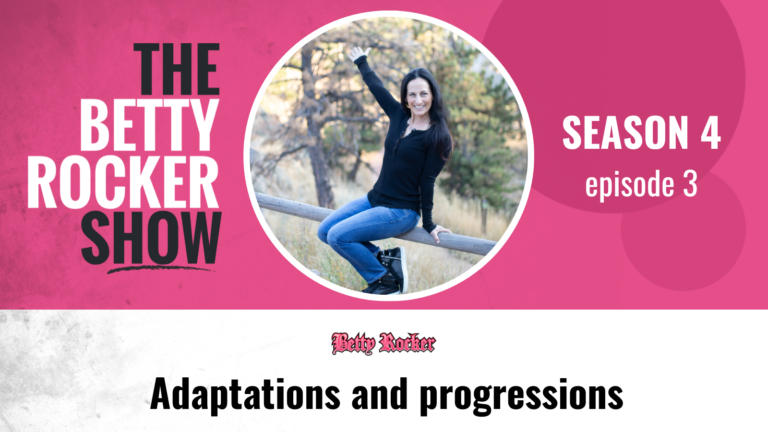
Our Season 2 – Innovations in Oncology – continues with a focus on precision medicine. I talk with CEO of Helix, James Lu, who had an interesting take on how precision medicine is evolving.
Below, you will find the video, audio and transcript:
Here is the audio-only version
Here is the transcript:
Arundhati: Welcome to the Met City Pivot Podcast. I’m your host. We are continuing with our focus on oncology this season. Precision medicine has been hailed as a key advancement in the battle against cancer, but how successful has it truly been? We chat with James Lu, CEO, and co-founder of Helix that helps bring genomic data to bear, not only for research and drug development, but also in clinical care.
So for folks that don’t know much about the company, can you just start with, you know, what you do, what your mission is, and some of the, maybe some customers that you have?
James: Yeah. So just a bit about Helix. So Helix is the leading precision health company in the country.
We’re really focused on enabling healthcare providers and health systems to enable large scale genomics across the health system. So that means genomics is really thought about as a data set that’s gonna be leveraged across various service lines versus a test by test kind of framework. And so we’re kind of the enterprise partner for organizations like Nebraska Medicine, MUSC, Ohio State, et cetera.
We run as part of that, one of their largest precision health clinical research programs in the world.
Arundhati: Sounds good. Now, you’ve, uh, created a couple of large registries, right? One for patients that were treated with GLP-1s, and then you recently announced a new comprehensive clinical Genomic Virtual Registry of autoimmune diseases.
How are these registries being used? Is it largely for, you know, research purposes, or are you, do you expect like, drugs to come out of that?
James: Yeah, so maybe I’ll just two pieces there. I think the first one is that they’re all kind of subsets of what broader program called the Helix Research Network.
Okay. So all of our large scale health systems that participate in that are scaling genomic programs to at least a hundred thousand people or more across our local catchment. And then participate in a larger research network as part of that. And so, we have over 16 health systems across the country committed to those programs.
We expect that to, to be well over a million to 2 million lives in that program. And as part of that, we then create subset target focused areas that are virtual registries of that. So autoimmune is one. Uh, GLP-1s another one, CV, metabolic, we’ll have one in oncology, et cetera. So these various areas that we focus and have, very specialized curation, but allows to think about both drug development but also treatment prognosis and prevention.
Arundhati: Okay, I’m wondering, since you are also collecting, this sort of in information, there are other sort of, you know, data companies out there like Komodo Health, Clarify Health, Health Catalyst, how do you differentiate from them? You’re providing only genomics data, data, or are you collecting like real world evidence too?
James: Yeah, so I, I think the way to think about Helix is that we think the, the historical, the wall between research and clinical side of the house has been, has kept almost the data too siloed in, in two different places. And so you have kind of companies who are like, Hey, I do data but don’t touch clinical care.
And you have companies that only touch clinical care but don’t touch data. Right? Right. And so Helix thinks about the genomic data set as both servicing, both research purposes, but also clinical purposes. And having the clinical workflows to enable all that too. And so we have a clinical testing program as part of all this as well.
We enable both broad scale screening programs that enable early detection, but those genomic data sets can support diagnostic use cases, pharmaco use cases, prognostic use cases. Then the data itself is combined with medical record data, combined with claims, combined with other fields that then generate a larger research asset too.
Arundhati: And you are saying other people out there, other companies out there are not doing this?
James: There are some companies kind of who have this bridge, but typically you see people on one side or the other, not typically trying to do the two.
Arundhati: Okay. Sounds good. So since you’ve mentioned the clinical care side of it, let me ask you this. A couple months ago, actually, in January, the previous FDA commissioner Robert Califf, was in town for the Precision Medicine World, Conference here in the Bay Area.
And a, a woman from the audience got up and asked him how he believes precision medicine has evolved over the last decade. And I’m gonna quote him. He said, “I was not very optimistic 10 years ago about the practical application of precision medicine. And I would say it’s been just as bad as my expectation.”
Hmm. Do you disagree with him? And if so, why?
James: That’s an interesting quote from, from Dr. Califf. I, so I didn’t hear that quote before, but my personal view is actually, if we’re correct in this next era of medicine, precision medicine will be just medicine. That increasingly the trend line is towards better, more targeted therapeutics, better, more targeted diagnostic capabilities that help us treat patients with the right drug at the right time.
All the things we want, right? And it is part of how we think about medicine in terms of how we think about, like quadruple aim, lower cost of care, better outcomes for patients, better experience of providers, et cetera. Right? So, I, I personally have a completely opposite view of the world, which is maybe the routinization of it makes it actually quite boring, but that’s actually what we want. We want this to become part of standard of care. And so that part of the journey is something that we’re all on right now. I, I think the evidence-based, like if you look at oncology care, it’s very clear now that these are primarily genetic diseases driven by genetic biomarkers, and that treatment against those biomarkers drive better outcomes.
So. I think we’re gonna see that percolate and we are starting to see it percolate both in, into cardiovascular areas, autoimmune categories, and in neuro as well.
Arundhati: Yeah, I think his brother died of cancer or of pancreatic cancer. Actually, so did mine. Not pancreatic, but kidney. But his brother recently died and he was just basically, from what I understand, pretty disappointed at how his treatment went.
And I know pancreatic is an aggressive disease. I guess what I’m trying to say is that I don’t disagree with him so much because I think that we know more than we ever did about genomics and the human body, but that hasn’t translated into actual improved outcomes because we have an entity called, you know payers in the mix, and they determine what gets reimbursed.
And in a way they determine, you know, what treatments will see the, light of day. Their, excuse me, their argument is that a bunch of tests are ordered. We have no understanding of whether this is actually, whether those tests actually have clinical utility. So we’re gonna, you know, not allow every test to be run.
I mean, what gives, I mean, there’s, you are creating all these registries, creating the insight. But actual practical application, I would say we’re still far from where we need to be.
James: Yeah, I, I, I, I agree with that statement, which is that, technology development has greatly outpaced adoption curves, but even more outpaced payment models.
Arundhati: Mm-hmm.
James: And if anything, in their space, like the payment model paradigm is a big driver of adoption, right? If I’m a physician who wants to use something, evidence suggests we should use, even if all that was true, payer adoption will still take a long time. Right?
Arundhati: Right.
James: And you know, for, I would say, I was gonna say for better or worse, but just for worse is my view, payers operate typically on a ROI timeline, right? And so there’s very much a financial element of this discussion, which is what is, we, we internally call it durational mismatch, but if I make an investment on something today, does it pay off for me as an entity that’s supposed to be a profit making enterprise effectively,
James: And if it takes, if I only have that person for six months, but it takes nine months to get a return, I’m gonna say no, or my incentive is to say no. Right?
Arundhati: Right.
James: And so that’s a lot of what I think happens in American healthcare is we have great technology. We don’t have the exact timelines that fit a perfect ROI curve.
And so basically it’s in everyone’s, it’s frankly in the payer’s interest to say no.
Arundhati: Mm-hmm.
James: So they kind of drag their feet and eventually they get kind of pulled along. And so I, I don’t know how to solve that in American healthcare, except the view is like if we had a longer run view or some other financial mechanism to drive a longer run view of prevention or a longer run view of investment, that would actually help, I think help a lot of adoption.
Arundhati: Mm-hmm. And what about like provider training? To know, you know, when to, you know, order this test or will I get the insights that I really want if I order this test instead of willy-nilly ordering tests? And I don’t know that they are, but that seems to be one of the arguments that that they are burden for, payers.
James: Yeah, I think that’s, it’s a very, it’s a fair comment on the provider education generally in the precision space. ’cause the pace of development’s so fast that, you know, I went to, when I went to this medical school like, I dunno, 15 years ago, right? We, we taught very low genetics.
Arguably we teach a little bit more today for not very much for what inevitably be an era of we’re gonna be doing a lot of it is my opinion.
Arundhati: Mm-hmm.
James: Right. And I think the reality is like. The educational process and the augmentation of the physician has just not kept up. Right. Right. So how do we do that in ever?
Well, we have great notification systems, we have point of care education, we have other ways of gathering information. I think we need to be thinking about that systematically in terms of how we deploy both technology, but also assistance to physicians to make better choices. I, my personal view is that organizing principle for that, so like the best organizations to deliver that are gonna be enterprises.
Arundhati: Mm-hmm.
James: I think that hey, we’re gonna individually you know, educate every single physician on every single protocol is probably not realistic. Right. So how does the enterprise provide digital assist to a providing, providing, that makes sense. And hopefully, you know, generative AI can help in, in sort of education too, in terms of resources that you’re providing, um, to the, to the physicians, hopefully not hallucinating the results.
Arundhati: That that is a big problem. That is a big problem. No question.
So we are in our innovations in an oncology season for this podcast, and we’ve talked about your GLP-1, uh, and, and your autoimmune disease registries. Are you planning anything in oncology? Because I see precision medicine as the engine that could probably attack, you know, cancer better than other, sort of, treatment mechanisms, sort of other insights that we might gain, uh, from other types of research. Yeah. What’s your sense?
James: Yeah, a hundred percent. Actually, just on the, the first statement, like molecular definition of oncology as a disease is years ahead of every other field. Right. I do think that’s coming everywhere and I think the next field that’s coming is cardiovascular actually.
Arundhati: Mm-hmm.
James: And it had really became hyper-relevant in oncology when it became clear you could tie a molecular biomarker to treatment and prognosis. And so I think you just saw this explosion and I think it’s like 50% of trials in America are oncology trials and 50% is everything else. Right?
Arundhati: Right.
James: And so our view is when we think about what we’re doing, there are a couple places where we think we can make a big impact. The first one is how do you think about early detection? Right? So, we know, for example, today in our programs, and we’ve done hundreds of thousands of people now, and we’ve looked at all the data, um, you know, 90% of BRCA carriers are missed in typical practice.
James: 80% of those people actually don’t have sufficient family history to qualify under typical guidelines. Another percentage is physicians don’t capture good family history. Probably not shocking if you only have 10 minutes. Right?
Arundhati: Right.
James: And so one is how do you enable a financial model and access program where anyone can have access. And that’s what we see in our programs. The second piece is even in directly incident cancer patients, I think it’s only like 7% of patients who should be tested are tested today. There’s really, I actually think it’s not a technology problem that’s a workflow, workforce problem.
And so a lot of our work then is how do I make this testing capability these data available at the right point so that it’s easier for people to practice top of license, to enable people to get through the workflows, and then the data becomes at the fingertips that the physicians as they treat, right.
So much of our framework is this thought of like someone comes in once for any purpose, for sequencing, and then they can have it digitally. We call that sequence query often. And so for example, chemotherapeutic treatments that have side effect profiles can now use pharmacogenetics, for example. So we think about that continuum from a clinical care perspective and then the registry on this other side to to constantly ask these questions about what works best, how the implementations work best, what treatments work better, et cetera.
Arundhati: Okay. Makes sense. And then just to clarify, you are only involved in the data aspect once the sequencing information comes your way. You are not, you don’t have a partnership with Illumina or whatever to actually sequence the tissue or whatever?
James: Oh, we, we, we operate, uh, I think it’s the largest exome clinical lab in the United States now.
Arundhati: Oh, wow. You do? Okay.
James: San Diego, I was there yesterday. It’s a big, beautiful facility, but yeah, we have a very large laboratory processing piece, but our view is you know, much of the break, much of the breakthroughs in this space are not at the data generation level. Okay. They’re at the workflow organization, the digital assistive provider level to, to give the information at the right time so people can make a decision clinically.
Arundhati: Yeah.
James: And then the backside of that is how you tie that into research to drive continuous improvement on that chassis. Okay. Versus, Hey, how do I just drive a sequencer?
Arundhati: Yeah. Yeah. And I don’t know why I forgot that you guys do that. Of course. Big, beautiful building. You almost sound like Trump. I wanted to ask, my understanding of, of that kind of testing is that you are not doing the whole genome testing, you’re only looking at certain portions, that are more associated with disease.
Would that be fair to say?
James: So we sequence a very broad based, we call exon plus. So it includes all the, all the exons of every gene. It includes a, a whole genome backbone as well. It includes pharmacogenetics, it includes a lot of stuff. Okay. The question is, when is that information relevant for the patient?
So in prevention, we report different things than if we’re doing chemotherapy management,
Arundhati: Yeah.
James: So same data set, multiple use cases, depending on the context of the patient. And our view is you wanna be able to provide that information at the point that’s most relevant versus, Hey, we just wanna tell you everything you want, everything you possibly can know right now.
Right?
Arundhati: Okay.
James: So our, our facilitation with our health systems is, Hey, if you’re a prevention patient, we’ll help you there. Hey, if you’re incident cancer patient will help you there. Hey, I’m, I’m being treated for this, using five, you know, Fluorouracil (5-FU). I’ll help you there. Hey, I have to think about a companion diagnostic will help you there.
So it’s the same data set, but different use cases along.
Arundhati: Fair enough, fair enough. Yeah. I wanna talk about, you know, the trajectory of your company as well, because like a lot of healthcare startups, you began in direct to consumer and then pivoted, I believe in 2019 or so. Pivoted to the, B2B side, I guess given what happened to 23andMe, you know, the fact that it went bankrupt, how important was that decision to move away from? I mean, I, I know you still have a consumer business, but that’s not the be all and end all of what you do. How important was that in the trajectory of, of your company?
James: So actually we, we, we, we don’t have a consumer business today.
Arundhati: Oh, you don’t? Okay.
James: We completely shut it down in 2020 ish, right around the time we actually the biggest revelation for the change, um, was that, so we, we, we started this big health system program in 2019 with Renowned Health. They were our first, what we call population genomics program. And we started to really ask very fundamental questions about if you start to report health results at scale within the context of healthcare, what happens to these patients?
Arundhati: Mm-hmm.
James: And the one thing we really learned is that in the direct to consumer context, so I return to you to say a BRCA result. Mm-hmm. I give you a genetic counseling session and we say, go to your physician. Right. I, it’s, I think it’s well known in literature now, but at the time, you know, 60% or 70% of these patients who have BRCA positive type results get lost to follow up within one year.
Arundhati: Okay.
James: And what it means is like, one is patients get busy, they forget, you know? Mm-hmm. It’s hard to schedule, can’t get access. Second thing is receiving a provider on the other side is not equipped to manage. Right. And so, actually it was a big revelation for me as the, you know, at the time was the chief science, chief medical officer of the company was, wow.
The way to do this actually is deep integration, right? Deep integration to healthcare to drive the outcome. ’cause my view is. What’s the point of, what’s the point of the result if you don’t get the treatment or the the management right.
Arundhati: Absolutely.
James: And so we actually just, part of the big, I would say, motivation for making the change was if we’re gonna do this thing, let’s do it.
Right? Right. Like, let’s get patients the type of care. And so if you go to any of our health systems to partner with Helix today, a lot of the work when I keep talking about workflow is how do I make this easy for physicians to adopt and how do I get patients to the right place?
Arundhati: Right
James: And so, you know, we’re quite, we’re quite proud of our outcome results now, where we can say, look, patient, you know, patient appropriate screening now after a positive now is 80% up from worse before the program started, for example.
So those types of outcomes are not testing outcomes. They’re actually the, the, the boring part of healthcare, which is. Person A has to go to person part B, like how do they go from here to here and how do I guarantee that? Yeah. And that’s sort of like, you know, shoe leather type stuff we do a lot of now.
Arundhati: Mm-hmm. I’m also curious, and this will be sort of my final question to you, I’m also curious about. You know, access to genomics in sort of, you know, rural settings. Right. You know, we live in, of course, in a very urban area. If we wanted to get genomics testing, we could do it at the drop of a hat. But what if I’m in, you know, rural America where first of all hospitals there are closing.
How do you look at that? Do you, does Helix have any relationships with hospitals and health systems in that part of the country?
James: Yeah. Actually we do a lot of work with major health systems in rural counties. Helix has partnerships with Sanford Health, which I think is the largest healthcare, rural healthcare system in America.
Right. We work with MUSC out of Charleston, which serves many of the secondary markets all throughout South Carolina. We have a partnership with like, say, Ohio State, which has outside of Columbus, a big rural county. And so, our programs, the way we think about the partnership with these health systems is they, they know how to manage treatment in their rural counties.
That’s like their mission, right? Part of their community focus is how do I deliver top tier care in places with historically have been resource poor.
James: And so we think the way to do that has been let’s partner with great health systems across the country, leading health systems. Let’s piggyback on things they already do and do really well and still achieve the same type of outcomes in those settings as we can in urban settings.
Okay. And I think that largely has proved to be true. Um, so I think that’s been our, our, our focus there is let’s get the right partnerships in place with many like-minded, you know, ethically aligned individuals and partners and physicians. And that helps us kind of bring the scale and bring it out to the right communities.
Arundhati: Okay. Well, I said final question. I will let you have, a final word on it, you know. So you disagree with Dr. Califf on the last 10 years of precision, medicine evolution. Let’s talk about the future, next 10 years. What will — and I’m not talking about Helix, I’m talking about in general the field of precision medicine — what do you need to see that’ll help you be convinced and convince people like me that we are seeing the outcomes of the insights that we have gained? Um, and those outcomes can be seen in, you know, better, uh, survival for, for cancer patients, more early screening. How would you define what those are?
James: So maybe I’ll do a slight clarification.
I think that the, the, the paradigm I often think about here is it’s slower than we all hoped, but faster than we think. Okay. And and I think that a lot of progress feels that way. It’s like every day it looks, it feels like why can’t it be faster? But you look back 10 years and you’re like, I can’t believe we came so far.
And so my view is we’re in an interesting spot. There’s a proliferation of technologies that are going up every single day. I would say that the level of studies to justify them have also got up, right. If we proved they’re valuable, the implementation science has really lagged. So if I can do this thing, technology really works, can I get it to achieve the real outcome?
That’s where the lag is. And so I think this next phase of investment is really gonna be, I would call it workflow op. I keep going back to workflow, workflow optimization, decision support, these things that help physicians actually achieve the outcome that we thought we were gonna get from the technology
Arundhati:. Mm-hmm.
James: And if we can get that, then that, that percentage of things that we’re losing today, we’ll capture. That capture will help drive hopefully, better reimbursement decisions to help feed the whole system. So I think that’s really where the, the core investments are gonna be here in the next couple of years.
I think monetization of that investment is challenging for most companies though ’cause that’s typically not within the strength of most companies. Most companies strength is in technology, right? Yes. Not so much the facilitation piece of it.
Arundhati: Mm-hmm. Perfect. Well, James, thank you for taking the time to speak with us today.
James: Of course. Thanks for having me.






